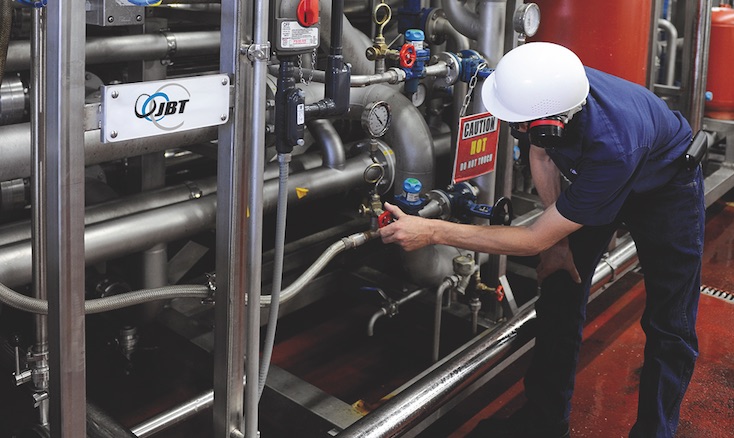
In a world where energy bills seem to be going ever up and staff shortages can make recruitment a costly headache, there is a temptation to set aside essential equipment maintenance for another day. However, such a decision risks not only unplanned downtime, but can also lead to expensive and lengthy repairs when breakdowns occur.
JBT is committed to supporting customers by providing timely, factual inspections that follow a protocol designed to track the wear on the drive system, belt and check the condition of the enclosure and electrical systems. This allows the team to advise customers on planning their maintenance spend by discussing the inspection report findings and agreeing on what is needed and assisting by advising on what repairs are required immediately.
The inspection protocol and the report that accompanies it is designed to allow the planning of capex level repairs and allows sites to also track the wear rates of the consumable items. At the same time, maintenance projects are combined wherever possible to help customers better manage the cost, writes Noel Carrick, JBT Service Manager for the UK and Ireland.
At JBT UK and Ireland, we are on track to meet or exceed the number of inspections carried out in 2021 and – at the same time – there has been a sharp increase in the cost of quotations between 2021 and 2022 due to inflation and increased material costs. But while this may seem encouraging from a healthy maintenance point of view, there is a concerning trend that points in the opposite direction.
Over the past 12 months, we have seen a growing trend of customers reacting to the costs of energy and staffing going through the roof by putting off essential repairs.

The potential consequences of such a decision can be very costly. If customers are lucky, they might only suffer a day or a day-and-a-half of unplanned downtime. If not and they suffer a De-Stack of their spiral freezer, they are likely to be looking at four days, plus the cost of replacement belt sections, which can run into tens of thousands of pounds or dollars.
Most JBT freezers are built around a self-supporting stack where the belt comes in and stacks in an “endless loop”. As JBT engineers, we build a stack from the bottom up, then take it around and feed it in again. If you have an issue with the drive system that causes either the inner or outer drive to stop, the belt will fall off one of the drive chains and de-stack.
If the problem isn’t serious, the freezer can be re-stacked slowly over the course of a day. In a worst case scenario, the belt has to be cut into small pieces and removed through one of the doors: that can take six people a day to do, followed by a day to investigate why the problem happened, and another two days to carry out repairs and install a new belt.

And bear in mind that one hour’s lost production can total thousands of pounds in itself.
But what can cause a de-stack?
There are many potential causes for a de-stack, one of them is delayed maintenance spend.
Most JBT freezer self-stacking systems are run on a ball drive that uses plastic balls. These typically last a year-and-a-half to two years, but if too much wearing takes place, the size of the balls will decrease and there will be more unsupported chain taking the weight of the belt or will allow for the drive chain to lean excessively which could result in a de-stack.

An even more expensive potential problem that worn balls can cause is if an unsupported drive chain leans excessively it can undercut the support rail, which can be extremely expensive to replace, as well as resulting in a minimum four days of no production.
The advice we give is tempered towards what a customer must do. If there is something else we recommend, it would be because it is economically beneficial to do both jobs at the same time. This is especially the case if two issues are interrelated.
At JBT, we’ll do our utmost to keep your lines running. And we’ll also make sure you aren’t paying needlessly by providing honest feedback designed to keep your freezers on track.

